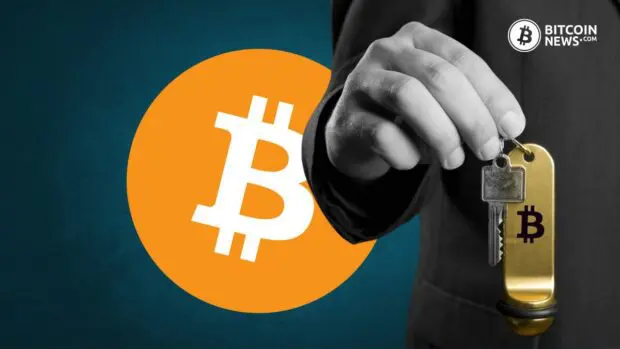Self custody in Bitcoin means that an individual holds and controls their own private keys, and by extension, their bitcoin. This is analogous to someone holding physical gold in a personal safe as opposed to relying on a bank or third-party custodian. Luckily, verifying the legitimacy of bitcoin in cyberspace is far simpler than for physical assets like gold, which could require melting down to authenticate.
Related reading: Bitcoin The Digital Bearer Asset: Demystifying Self-Custody and Private Keys
While it is true that the regulatory landscape in various jurisdictions obligates certain individuals and entities, particularly those in financial services, to report their holdings and transactions to regulatory bodies, this requirement extends to prevent illicit activities and to maintain tax compliance.
This makes sense for businesses and corporations competing in regulated markets. However, having these requirements intrude into personal finances, especially when extended to private individuals, seems incongruous in a society that values personal freedom and privacy.
Related reading: Blockchain Forensics: Balancing Crime and Privacy Rights
The Paradox of Bitcoin’s Transparency
Bitcoin’s architecture offers a unique conundrum: it is at once transparent, allowing anyone to verify the stringent 21 million cap and transactional history, and yet remarkably private, as the true control of bitcoins rests unseen with the holder of the private keys.
This dichotomy ensures the integrity of the currency while posing challenges to personal financial privacy, especially under regulatory scrutiny. While the public ledger is open to anyone running a node, confirming who actually controls the private key—and thereby the bitcoins—is a different story altogether.
This setup creates a veil over the true movement of assets, for while one can observe the flow of coins, discerning whether the owner or a clever imposter has accessed them is not so straightforward. It’s a ledger that reveals much, yet discloses little about the custodians behind the keys, as the elusive Satoshi could attest, should they choose to resurface.
Bitcoin vs Gold: The Privacy Dichotomy

Similar to privately-held gold, some argue that bitcoin owners should have discretion over disclosing their holdings, as both gold and now bitcoin arose as free market-chosen forms of private money without centralized authority. It makes sense that investors disclose what companies they own to avoid conflicts of interest.
It does not make sense to require people to disclose their cash, gold, or bitcoin holdings. Permissionless financial privacy is not only appealing, it is required for a free society. While gold transactions can remain entirely hidden, Bitcoin’s public ledger permanently records all transactions in a transparent, traceable fashion. This transparency ensures integrity, as manipulations like inflated supply are detectable. It also aids adoption for legal use cases. However, it raises questions around financial privacy rights.
Reconciling Reporting with Self Custody
To reconcile the necessity of regulatory compliance with the ethos of self-custody, innovative solutions are required. Companies like Swan, On-ramp and plenty others are developing helpful tools centered around multi-signature wallets for both individuals and institutions.
The different ways financial service providers can leverage multisig wallet solutions are exciting. One of the most common uses so far is a ⅔ multisig solution allowing a compliant third party to hold a key which makes sure that the provider is not encroaching on the individual’s control of their assets.
This arrangement also has the potential to address regulatory verification in a subtle yet effective manner. The third party could help verify the identity of the signer if need be, ensuring that the person transacting is indeed the rightful owner of the private keys.
This system also adds a layer of security against potential theft or unauthorized access, all the while maintaining the user’s control over their assets. It’s a delicate balance for companies trying to straddle the line between user autonomy and regulatory compliance.
Using multisig might be a practical solution to the challenge of verifying asset ownership without breaching privacy or control. As the Bitcoin ecosystem continues to mature, such innovative solutions are vital in maintaining the integrity of personal financial freedom while adhering to the regulatory frameworks in place.
The Future of Regulatory Adaptation
The regulatory landscape must evolve to address the distinct characteristics of Bitcoin. It is foreseeable that we will witness the emergence of more refined approaches to self-custody, which support both privacy and autonomy, while also deterring illegal activities and fulfilling tax obligations. It would be great to see the industry develop standardized reporting mechanisms for self-custodied assets, aligning with regulatory requirements without betraying the foundational tenets of Bitcoin.
Advocate For The Change You Want To See
The very principles of autonomy and privacy that underpin Bitcoin are occasionally at odds with regulatory efforts towards transparency. However, these principles are the bedrock of Bitcoin’s revolutionary role in finance. Achieving a balance between innovation and regulation is not without its challenges. It will require time and collaborative discourse among all parties involved.
Anyone who has played sports knows that referees are important for having legitimate games. The problem is when the refs try to tip the scales in one team’s favor.
Bitcoin represents a paradigm shift towards a fair game. A game where people can verify the ref is not cheating because the ref is their own computer. Bitcoiners have a vested interest in advocating for their rights to privacy and sovereignty in savings. As such, it is crucial to convey to policymakers that the act of saving, especially within the Bitcoin network, is neither a crime nor a matter for public disclosure. It is a legitimate exercise of economic liberty.
Related reading:










